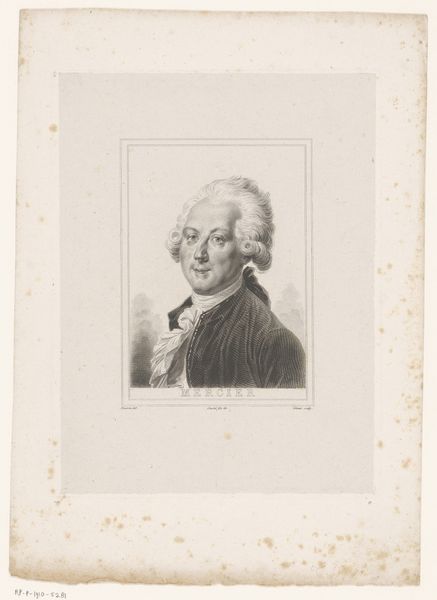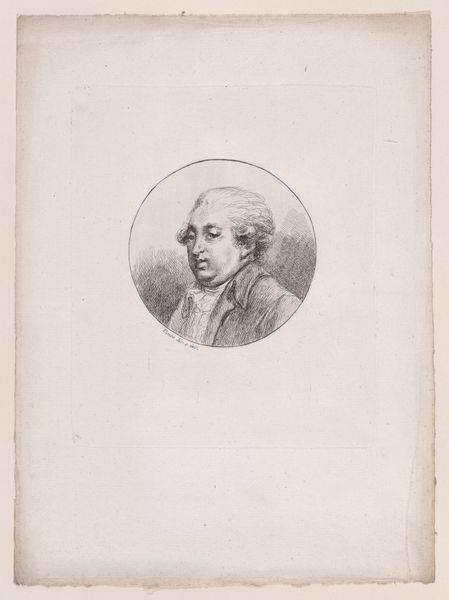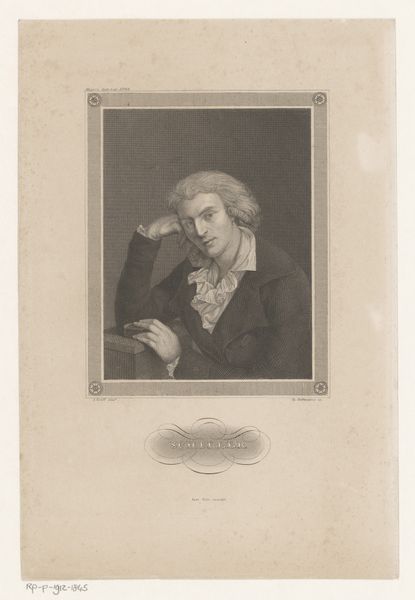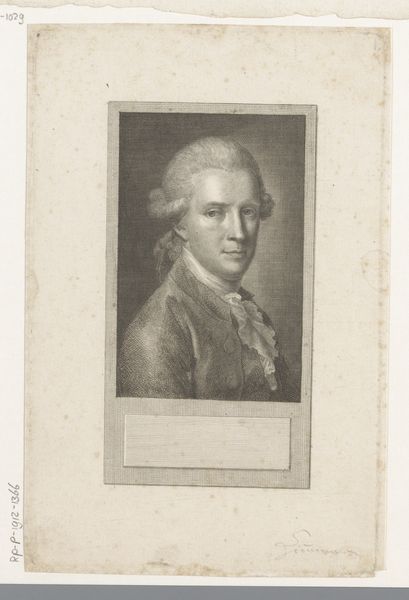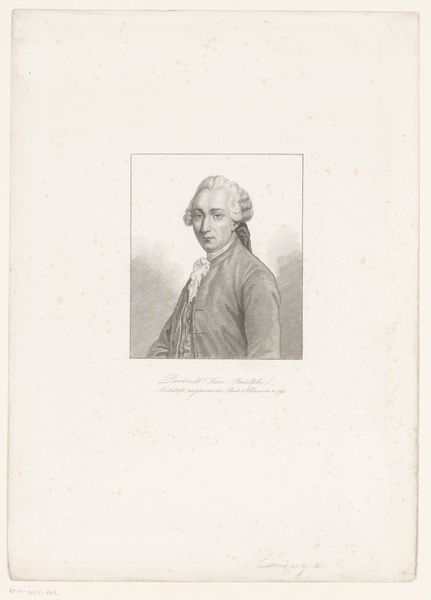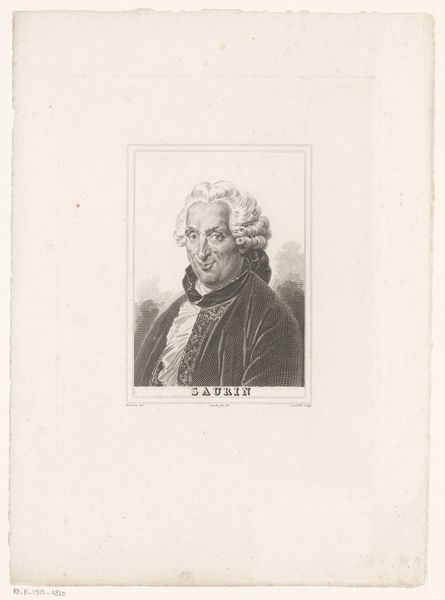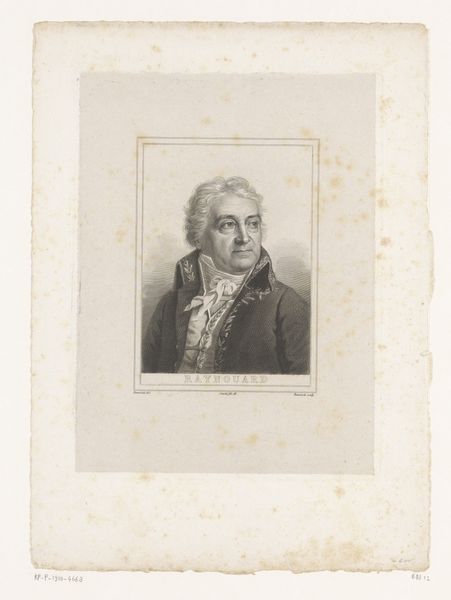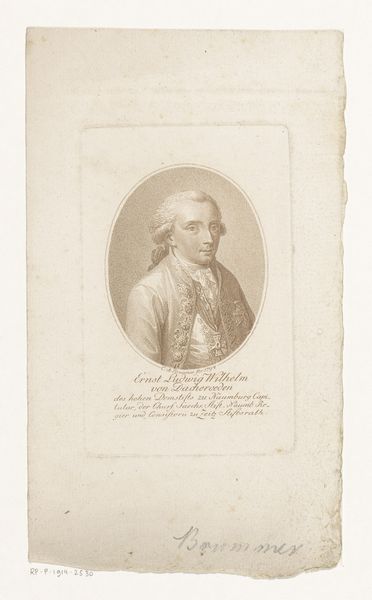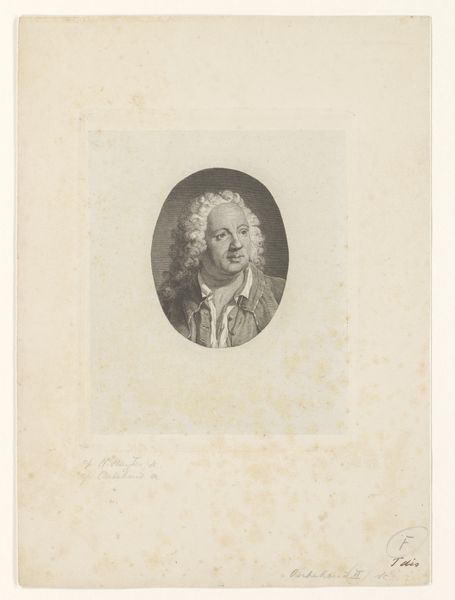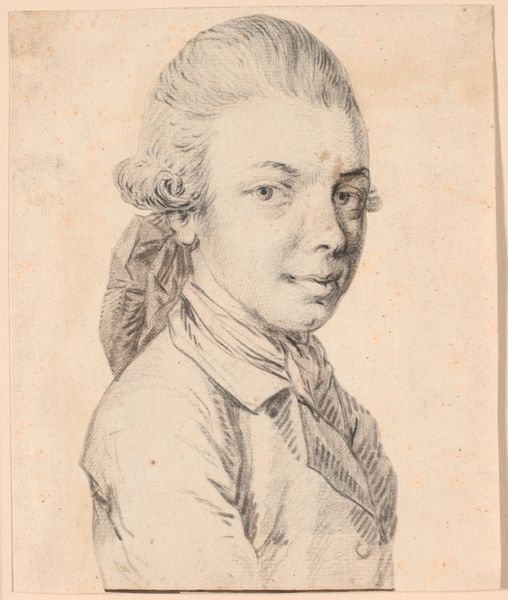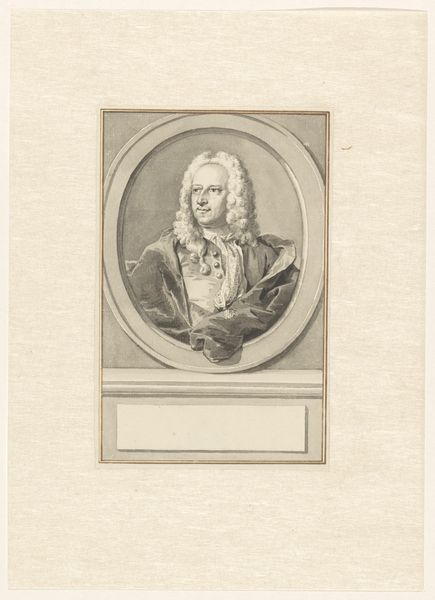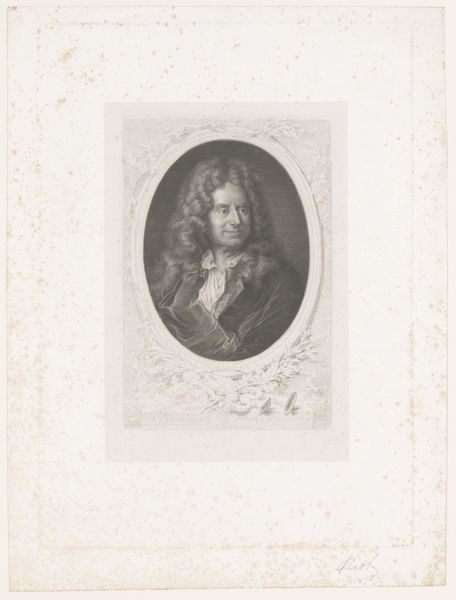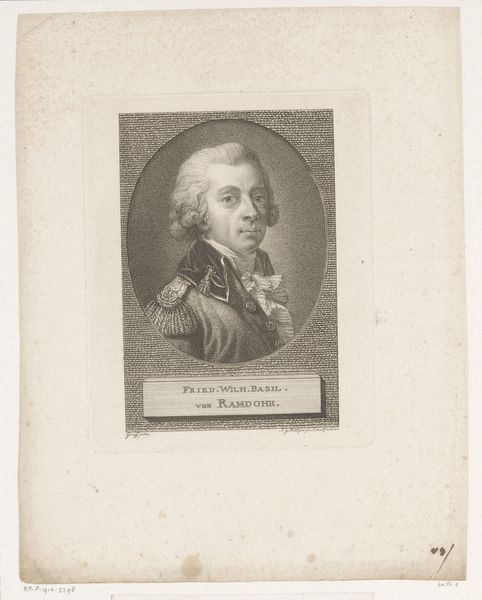
Dimensions: Plate: 6 5/8 × 5 in. (16.9 × 12.7 cm) Sheet: 13 3/4 × 9 5/8 in. (35 × 24.5 cm)
Copyright: Public Domain
Curator: Here we have Adam von Bartsch’s “Self-Portrait” from 1785. It is currently held in the collection of the Metropolitan Museum of Art. Bartsch was an Austrian printmaker and art historian and this image provides insight into how he chose to present himself. Editor: It strikes me as an exercise in refined control. The meticulous detail, especially in the rendering of his ruffled cravat and powdered wig, creates a palpable sense of status and self-awareness. Curator: Absolutely. One can view such portraits as deeply political. They communicate so much about the social values of the sitter and their intended audience. The conventions of portraiture served to solidify class hierarchies. Look at the delicate rendering, meant to show not only his physical presence but his elevated societal position as well. Editor: And I'm struck by the consistent use of light and shadow here. It highlights certain areas of his face, namely his eyes, nose, and the contours of his cheekbones and neck. The use of chiaroscuro elevates what could be a simple likeness into an idealized representation of masculine intellectualism. There are established connections between specific facial features and moral virtues. I’d be interested to research what qualities people associated with his particular features, and the assumptions they made about his character, during the Enlightenment. Curator: Contextualizing this self-portrait requires that we consider Bartsch's broader cultural context, not only his artistic practice. This was a time when aristocratic men held tremendous social power; portraits such as this upheld existing hierarchies. How does a work like this speak to or perpetuate structural inequalities? Editor: Though, I must confess, I feel a slight disconnect with the man depicted. Perhaps because of the highly stylized approach to the representation. I want to better understand the personal within these standardized conventions. I’m keen to examine how Enlightenment thought about rationality and perception shaped visual symbolism. Curator: Looking at Adam von Bartsch’s face here is a sobering exercise in reading visual codes embedded with implicit and explicit cultural meaning. We must be wary of reading history uncritically. Editor: And to me, reflecting on the history and psychological intention surrounding portraiture underscores its continuing significance in helping us understand ourselves.
Comments
No comments
Be the first to comment and join the conversation on the ultimate creative platform.
